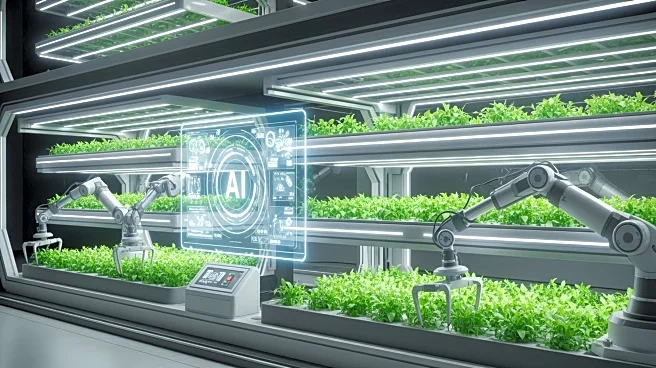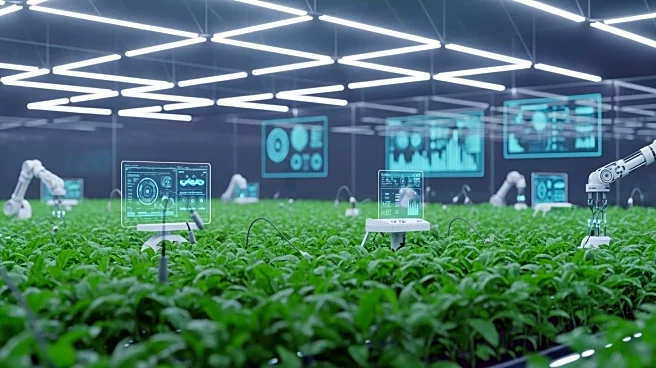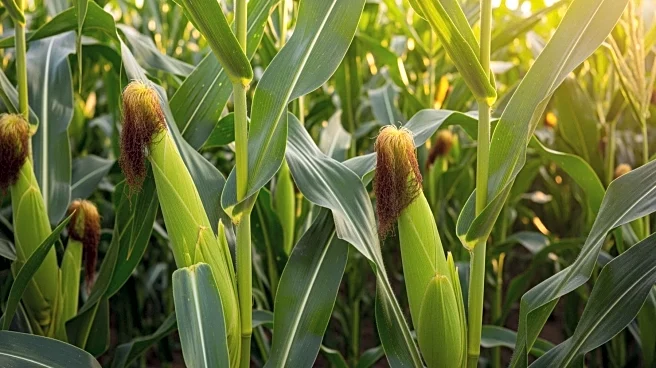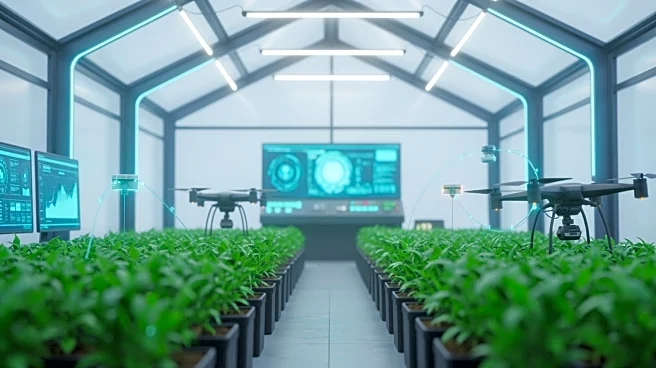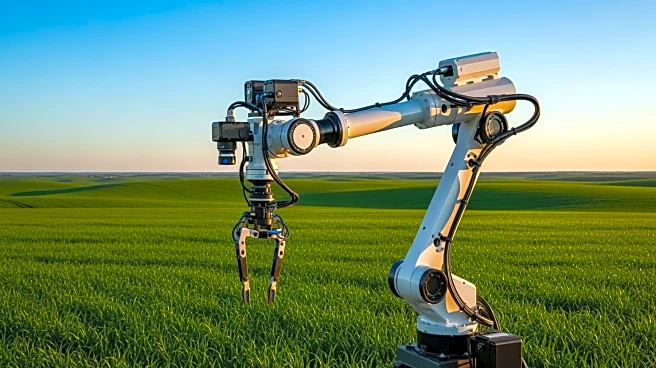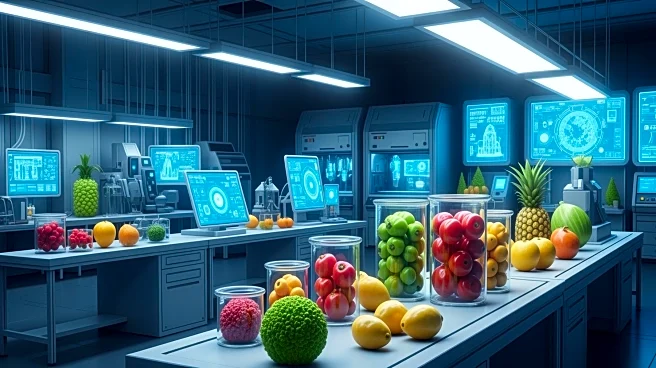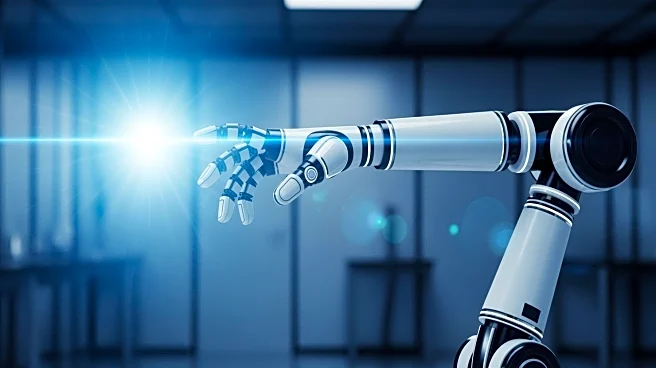What's Happening?
The vertical farming industry is undergoing a significant transformation with the integration of automation and artificial intelligence (AI) technologies. These advancements are being utilized to monitor
plant health, detect nutrient deficiencies, and adjust environmental parameters in real time, thereby minimizing human intervention and ensuring consistent crop production. The market, valued at USD 8.32 billion in 2025, is projected to grow to USD 68.67 billion by 2035, reflecting a 23.5% compound annual growth rate. This growth is driven by the need for sustainable agriculture solutions that reduce land and water consumption while providing year-round crop cultivation. Companies like Iron Ox and BrightFarms are leading the charge with AI-driven platforms and strategic partnerships to expand distribution and optimize farming operations.
Why It's Important?
The adoption of AI and automation in vertical farming is crucial for addressing global food security challenges and urbanization pressures. By reducing reliance on traditional farming methods, vertical farms can produce food closer to urban centers, decreasing transportation costs and carbon emissions. This shift not only supports environmental sustainability but also aligns with consumer demand for locally sourced, pesticide-free produce. The U.S. market, in particular, stands to benefit from these innovations, with large-scale installations and investments supporting the development of next-generation farming systems. As the industry grows, it could significantly impact the agricultural sector by creating new business opportunities and enhancing food supply resilience.
What's Next?
The vertical farming industry is expected to continue its expansion, with further advancements in AI and automation likely to enhance operational efficiency and yield. Companies are anticipated to explore hybrid farming models that integrate traditional and high-tech cultivation methods, potentially leading to new retail partnerships and in-store farming solutions. As the market evolves, regulatory frameworks and government policies may also adapt to support sustainable agriculture practices, further driving industry growth. Stakeholders, including agritech startups and investors, will likely focus on scaling operations and exploring new crop categories to meet diverse consumer needs.
Beyond the Headlines
The integration of AI and automation in vertical farming raises important ethical and economic considerations. While these technologies promise increased efficiency, they may also lead to job displacement in traditional farming roles. Additionally, the reliance on advanced technology could create barriers for smaller farms lacking the resources to invest in such systems. As the industry grows, it will be essential to address these challenges through inclusive policies and support for small-scale farmers to ensure equitable access to the benefits of vertical farming.
